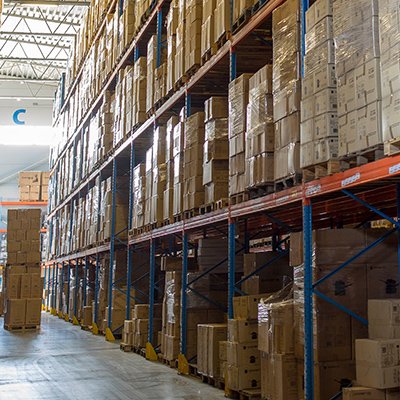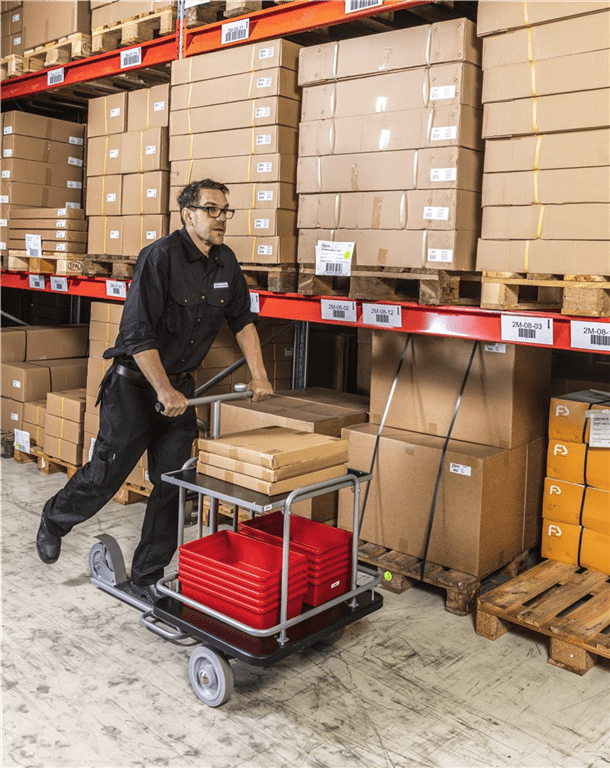Warehousing – what warehouse managers do to protect their company’s assets with ten fingernails.

We’ve all seen the videos where a silly little slip of the finger collapses an entire warehouse. We tend to look at the situation from a distance, thinking that luckily it wasn’t my warehouse and I have the shelves in my warehouse all in good order. At the same time, one might immediately ask, do you have a procedure in place in your warehouse and a person who is dedicated to fixing and repairing damage to warehouse shelves immediately? It is bad when injuries are “discovered”, i.e. nobody reports what has happened. Do forklift drivers give honest feedback when an incident occurs?
Generally, damage is collected, so to speak, and then the whole job is done at once, letting the shelf sections be curved and taking smaller risks with a weaker shelf than usual. There will always be major and minor mishaps, but there must be a person responsible for safety in the company who has the information and can assess the extent of the damage on the shelves. If in doubt, you can call on the help of storage specialists. Send a picture of the damaged laurel detail to the company and ask for an opinion.

Keeping a diary gives an idea of the regularity of damage and also provides feedback on which part of the warehouse is most affected. The system is very simple: put a picture/sketch in the diary, write the time of the accident, the equipment involved, etc.
On the basis of the information gathered, conclusions can be drawn or appropriate action taken. Perhaps the gaps between the storage bins are too small and there is too little space for the forklift in use to load at speed. Sometimes, the problem can be caused by drivers being in too much of a hurry. It is not always the fault of the person to whom the accident happened. It is worth looking at and investigating the incident in a broader context than a single damaged shelf or distance stick. Unfortunately, of course, it cannot be said that there is no blameless behaviour among forklift drivers towards company property.
We are making an arbitrary comparison, but let’s compare a warehouse shelf with a house on chicken legs. Driving recklessly while turning with a forklift truck into a kneeling position, he must stand without the assistance of one leg. We drive over the labyrinth and of course we try to get a kick out of it by shoving the goods. Keep us from it if our feet are unsecured.
All four legs of the laurel wheel must wear properly and do their job. Don’t procrastinate on repairing your laundry baskets – make it a regular activity! Keep a diary, take photos and note down any storage boxes that have been damaged. Replacing a few rack posts, distance rods or beams in a warehouse shelf is no cost compared to the goods you are storing.


Some suggestions:
- Take a look around the warehouse to see which corners are taken the most if you were to organise a forklift truck race. Place the mail guards of a decent metal base shelf there. The metal should be strong enough to be felt in the lift.
- Place the end brackets of the base shelf at the ends of the row of shelves.
- Install a limiter or net on the base shelves to prevent the pallet from being loaded too deep. This protects the walls and prevents the building from being damaged by forklifts.
- If a base shutter guard cannot be used, install thick plywood painted to match the colour of the house, wall or post. Use the same plywood to protect the door panels when entering and leaving the warehouse. Be creative.
For better security and to protect the storage shelves and the building:
- Replace the curved parts of the shelves! Remember not to skimp on this!
- In the busiest areas, be sure to install safety barriers on the base shelves.
- Install safety barriers at the ends of the row of base shelves.
- Protect doors and metal security posts, corners or plywood.
- Protect the walls of the base shelves with a safety net or restrictor.
- Ensure the security of the tunnel from the base shuttering by using mesh or H protection.
- Beams at height can also be damaged – check upstairs.
- Avoid overweight and curved beams.
- Regularly check the condition of your storage bins and keep a logbook.

